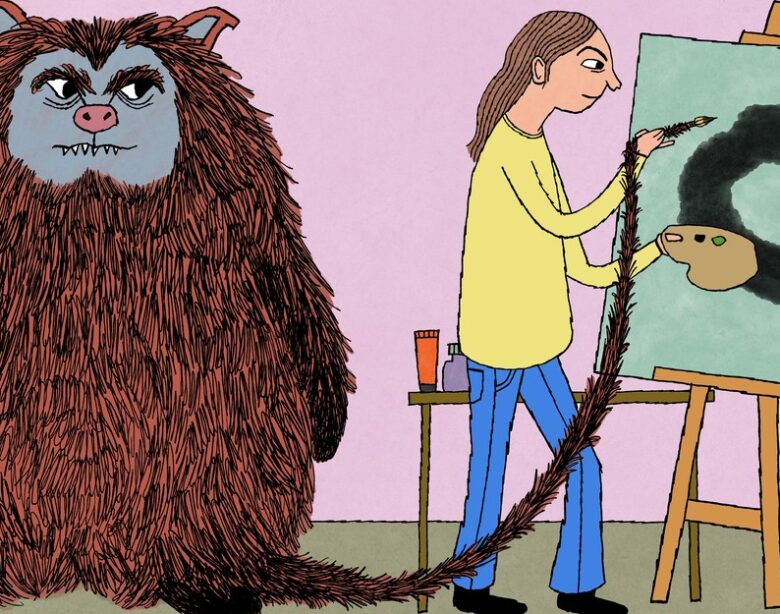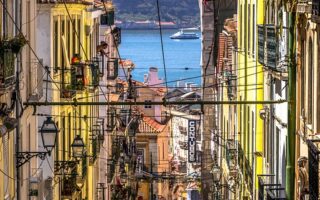[ad_1]
When she coined this term monster of art In 2014 Jenny Offill didn’t expect it. How enthusiastic will readers be? in her novel Department of speculationOffill’s speakers are writers, wives, and new mothers. Confessed in an oft-quoted passage that when she was a child “My plan is never to get married. Instead, I would become an art monster.” She admits the idea was unconventional: “Women almost never become art monsters. Because art monsters are only concerned with art. It was never normal,” a phrase that Offill said she intended to be. It’s funny. has captured the imagination of Creative middle class woman– “She uses it as if we all already know. And when the answer is received I guess we know,” said Lauren Elkin, who last year published a book titled Art Monsters: Unruly Bodies in Feminist Art– Mention of Offill’s coins– “But then I was like, Now Jenny has brought it to us. And it has entered the feminist lexicon. How do we use it?”
It turned out that looselyand often– in the barrage of Think in pieces.Women fascinated by the term wondered if creative genius required complete family negligence—a willingness, as Claire DidererAuthor of the year 2023 book Monsters: Fans’ Dilemmathat is, “abandoning the duty of care to practice the selfish sacraments of artistry.” This rhetoric is not new. In 1971, art historian Linda Nochlin argued that women shouldered the burden of “Guilty feelings self doubt and 1,000 years of neutrality” have long been forbidden from pursuing art. which is seen as a distraction caused by “Selfishness Selfishness” ” Decades later Some women saw Offill’s artistic monster as an invitation to join the D-Program. And they began to recall the artists involved as themselves. “Not as a villain. but an inspiration” as Willa Paskin write– Today, many observers are still stuck on the same question: Are women artists selfish enough?
Sabine, the protagonist of Ella Baxter’s second novel. Woo wooAbsolutely, Sabine is a Melbourne-based conceptual artist. It’s a textbook art monster. “Prostrate herself before the altar of art,” in her own words. She said her life revolves around creating and studying art. She claims to spend most of her time in her home studio, in galleries, and in the pages of art history books. Even though she puts in a lot of effort into scrolling on TikTok, at 38 years old, she is successful. (Her CV has received numerous grants and international exhibitions) and has received special praise from Her “Gothic Skin” is basically a life-sized, wearable puppet. which looks like different versions of her and draws heavily on femininity (Crone, Siren, Waitress, Venus), Sabine is clearly a feminist artist. But we never learn what motivated her to create art in the first place. Her work lacks coherent politics. She describes one performance piece. in which she wears a Gothic outfit called Menopause and sitting in a hole he dug himself on the side of a freeway, saying there was “something patriarchal. Some of it has to do with capitalism.”
Woo woo It happened in the added weeks leading up to the solo exhibition. Sabine’s “career-defining” series, a series of so-called self-portraits Damn it, help me.– The bold names conceal artistic confusion, with Sabine confessing to her gallery that she “It’s a little vague about ‘Fuck You, Help Me’ technically” as the show drew to a close. Anxiety about hospitality consumed her. Then things Well, it’s bizarre: She begins receiving visits from the ghost of experimental artist Carolee Schneemann and receives troubling correspondence from a would-be stalker. Delusions of grandeur ensue. She harassed TikTok reviewers who called her work “bad art.” Watch porn in McDonald’s. and defecated in her backyard. By order of the gallery She hosted a TikTok live stream to promote the exhibition. With each video documenting her deterioration, her husband Constantine said, “I swear the week you performed was like watching someone go psycho for a long time.”
Sabine’s state of mind may be in part a response to the demands placed on contemporary artists. Baxter’s novel suggests that finding success in a field crammed with dwindling resources Being a creative genius is not enough. You also have to be a professional jockey. Creating art requires introspection, however, promoting it requires efficiency. If it’s not a complete sale. This conflict is pervasive. Woo woo– During gallery-mandated live streaming Sabine announced that she She was “wary of the pressure to sell myself instead of my art,” but she was eager to “Differentiate yourself” from other artists at her gallery representation later, before an interview with a major art magazine She calibrates her brand: She should introduce herself as “Creative class” or embrace “the privilege of being a famous artist in this economy” first? When the interviewer arrives He will ask an open-ended question: “Where do your ideas come from?” “What about your drive to create?”—but wanting “immediate answers.”
Sabine’s response to these competing expectations was to transform self-promotion into an extension of her art. The first time we met her She was directing Constantine as he photographed her to promote the exhibition: “Pure and uncompromising austerity is required to create transcendental, transcendental art,” she declares cryptically while posing. She wasn’t even interested in live broadcasting. Because as you said “Recording anything with a camera makes it an art.”
the best Woo woo It’s a sharp, scathing satire of the contemporary art world’s ills: competitiveness, hypocrisy and suffocating isolation. Baxter has a sharp pen with an ear for dialect. She uses both the internet and speech therapy. Not to mention deliberate. The obscure language of the art worldTo get good results in tilting her target. You don’t have to be a selfish monster to make art, Baxter posits, but you might become one in the process of promoting what you’ve created.
Woo woo It also brings out the glamor from being an artistic monster. This makes the pioneering feminism of cultural figures who are typically male even more complicated. Sabine is intolerable. Both bad husbands and wives and bad friends. Simultaneously needy and careless, despite her self-proclaimed devotion to her art, But we never felt that her work was that good. Moreover, Baxter views her relationship with feminism as questionable through her interactions with her husband. Constantine supported Sabine inhumanly. (He’s as uncompromising as his name suggests.) But Sabine resented his career ambitions and co-opted the language of feminism to express her personal grievances as political concerns: She said her career aspirations He carries “all the hallmarks of patriarchy.”
With her depiction of Sabine and Constantine’s marriage, Baxter not only denies such claims; (repeated by Offill’s commentators and Many books recently) that husbands are enemies of women’s art She questions how the empowerment of artistic monsters is actually a symbol of feminism. A female artist’s decision to be selfish in the pursuit of her work can seem both subversive and empowering. Not to mention a sign of seriousness and commitment to one’s craft. But the gender-flipping art monster isn’t that violent, it’s Mairead Small Stain. argued intelligentlyPioneering Feminism in Artistic Specterism “It does not overturn the rules of male-dominated doctrines. But stick to those rules” by perpetuating the dusty idea that artists should be held to a different standard than any other human being. The novel’s marketing copy claims: It is “about what it means to make art as a woman,” but Sabine’s identity aligns with the identity of the archetypal male artist. At one point, Baxter writes that Sabine could not “believe that she was anything less than a young god”, which Pablo Picasso, the most famous artistic monster, was prone to. Tell yourself–
During the climax of the novel Sabine tries to make the evil within her come true. She uses animal bones and raw parts from the butcher shop to transform herself into a giant pig and confront her stalker. This moment stands out as the first time we see Sabine truly feel called to creativity, that is, to create art for reasons beyond professional ambition or personal vanity. We see her passionate about the vision. Sourcing materials and displaying, we see the process behind the product. Maybe under that monster It’s the artist.
When you purchase a book using the links on this page. We will earn commission. Thank you for your support. atlantic ocean
[ad_2]
Source link




